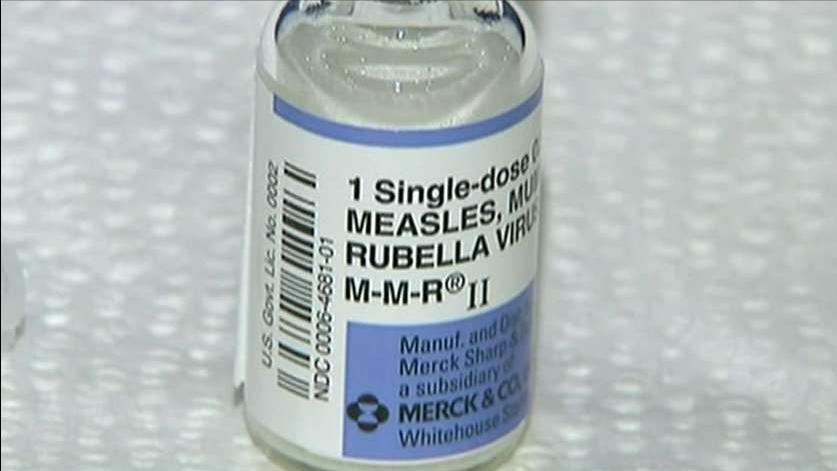The cost of this century's worst measles outbreak
The U.S. is currently grappling with the worst measles outbreak of the century – the CDC estimates there’s close to 700 cases so far this year, and it’s only April – and with no end in sight, the economic cost of the highly infectious and potentially deadly virus is continuing to rise.
“It is expensive to the public health system,” Dr. Nate Smith, the director and state health officer for the Arkansas Department of Health, told FOX Business. “The real cost, though, are not all financial, and they're borne by the individuals and the families.”
Although Arkansas has not had any confirmed measles cases so far this year, Smith said the state carefully analyzed one case in 2018 to determine how much it cost the health department. The result? A staggering $47,962.
While Smith, who also serves as co-chair of the infectious disease policy committee for the Association of State and Territorial Health Officials, emphasized that each case and outbreak is unique – and therefore the cost is not uniform for one case – he said close to $50,000 is “pretty consistent” across the U.S. (based on a report in the medical journal Vaccine). Extrapolating that number for the confirmed 695 individual cases in 22 states, the economic cost totals out somewhere close to $30 million.
Measles can cause fevers, coughs and rashes, but also blindness and permanent neurological problems, Smith said, noting the importance of the “safe and highly effective vaccine.” About one in 1,000 people will die from it.
“And quite honestly,” he said, “you can vaccinate a whole lot of folks for $48,000.”
Other estimates vary about the overarching cost: A report published by the Journal of American Medical Association in January found that investigating two unrelated measles cases in Denver cost the local health department about $70,000 to investigate.
The reason measles is so costly? It’s incredibly contagious.
Historically, Smith said, about 90 percent of people exposed to measles will become infected if they are not immune or do not have a vaccination. Adding to the high communicability, the virus remains in the air of a room for up to two hours. For health departments, that means they have to investigate a lot of potential measles cases, following the person for the entirety of the 21-day incubation period to verify they aren’t sick or spreading the virus.
“There are not many infections that have that high of level of communicability,” Smith said.
For health departments to cope with the outbreaks, they also need to pool their resources together, often diverting their energy from day-to-day activities to instead focus on the measles, said Kevin Sumner, the president of the Middle Brook Regional Health Commission in New Jersey. Sumner also sits on the board of the National Association of County and City Health Officials.
Outbreaks are also becoming more frequent because of lower vaccination rates. The World Health Organization says the 93 percent to 95 percent threshold is required for herd immunity, the point at which everyone in the community is protected from the virus. (In 2000, the U.S. had fully eradicated measles by doing so.) Right now, Sumner told FOX Business, the U.S. is in the 70 percent range. And combined with the change in lifestyles like traveling, the disease is more easily spread.
CLICK HERE TO GET THE FOX BUSINESS APP
“These are costly outbreaks that can be prevented,” Sumner said. “And primarily that prevention can be accomplished through vaccination.”




















